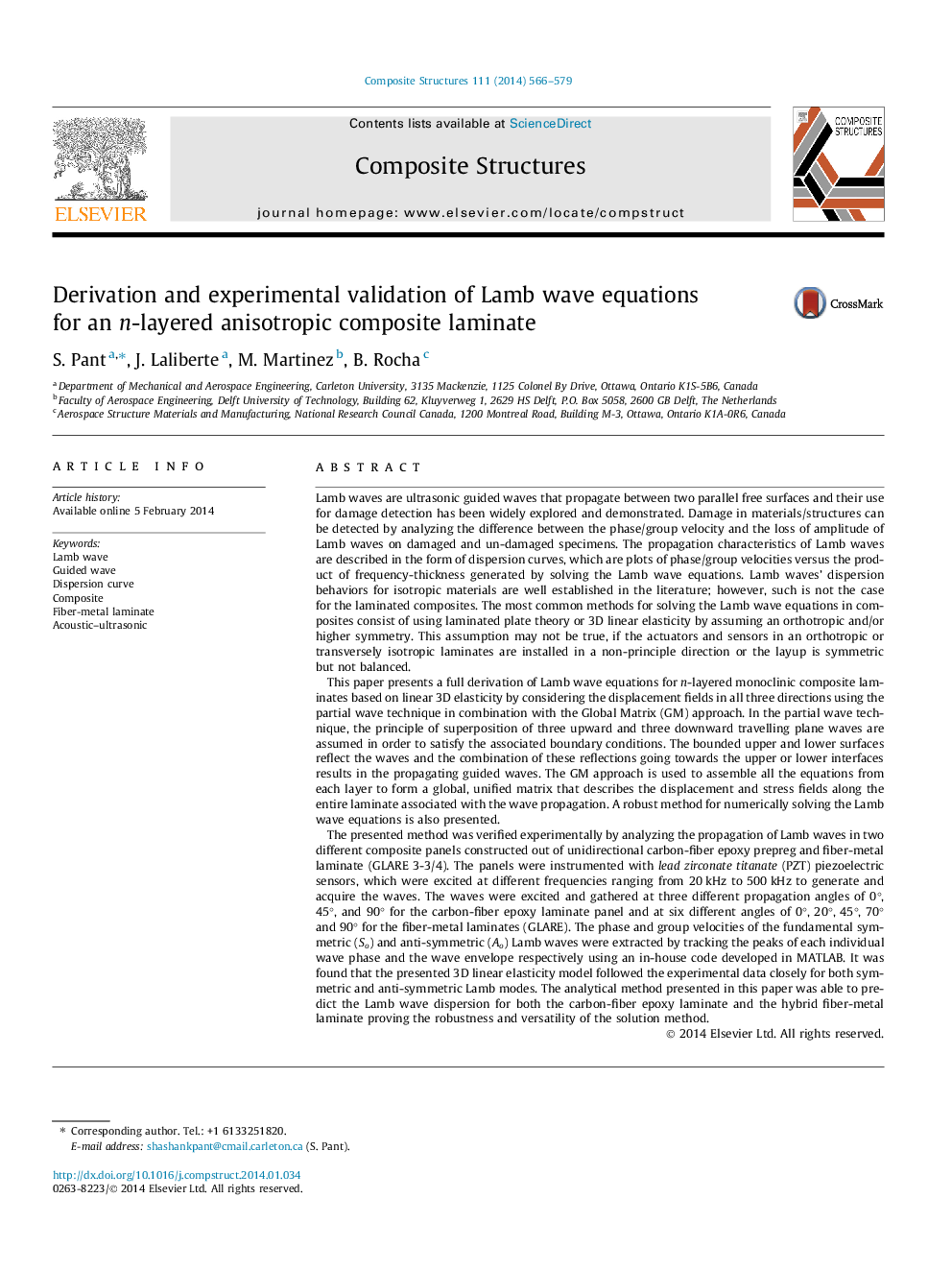| Article ID | Journal | Published Year | Pages | File Type |
|---|---|---|---|---|
| 6708120 | Composite Structures | 2014 | 14 Pages |
Abstract
The presented method was verified experimentally by analyzing the propagation of Lamb waves in two different composite panels constructed out of unidirectional carbon-fiber epoxy prepreg and fiber-metal laminate (GLARE 3-3/4). The panels were instrumented with lead zirconate titanate (PZT) piezoelectric sensors, which were excited at different frequencies ranging from 20 kHz to 500 kHz to generate and acquire the waves. The waves were excited and gathered at three different propagation angles of 0°, 45°, and 90° for the carbon-fiber epoxy laminate panel and at six different angles of 0°, 20°, 45°, 70° and 90° for the fiber-metal laminates (GLARE). The phase and group velocities of the fundamental symmetric (So) and anti-symmetric (Ao) Lamb waves were extracted by tracking the peaks of each individual wave phase and the wave envelope respectively using an in-house code developed in MATLAB. It was found that the presented 3D linear elasticity model followed the experimental data closely for both symmetric and anti-symmetric Lamb modes. The analytical method presented in this paper was able to predict the Lamb wave dispersion for both the carbon-fiber epoxy laminate and the hybrid fiber-metal laminate proving the robustness and versatility of the solution method.
Related Topics
Physical Sciences and Engineering
Engineering
Civil and Structural Engineering
Authors
S. Pant, J. Laliberte, M. Martinez, B. Rocha,
